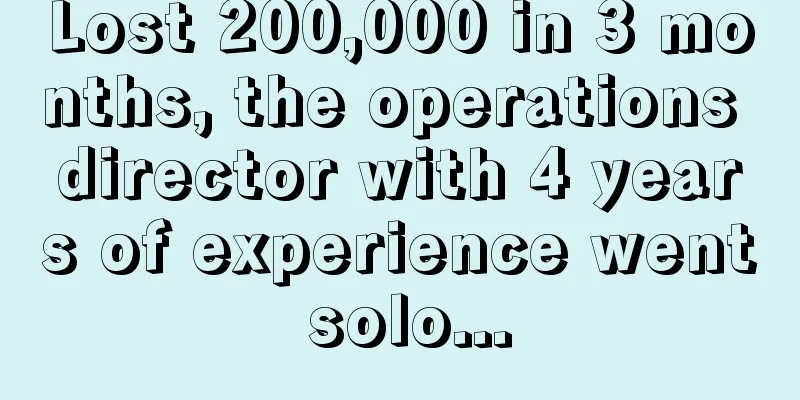Excess inventory drives up costs! Walmart and other retailers follow Amazon’s lead: refunds without returns!

|
It is learned that in the past few months, due to the global logistics crisis, sales have dropped and operating costs have continued to rise. Retailers of all sizes in the United States have reported excess inventory. In order to deal with the excess inventory and make room for hot-selling products during the peak sales season, retail giants such as Walmart are changing their return policies: consumers will receive a refund but do not need to return the goods. In addition to Walmart, other retail giants such as Target, Gap and American Eagle Outfitters are also considering modifying similar return policies. Burt Flickinger, retail sales expert and CEO of Strategic Resource Group Retail Consulting, said: "For retailers, there is excess inventory in every category, from clothing to furniture to oversized toys. Storage costs are rising under the weight of excess inventory, and if returned products are added, it will not only increase inventory costs but also make inventory more chaotic. Implementing a new return policy of refunding but not returning the goods is a wise move for retailers. Because retailers' net profit for $1 of products is 1-5 cents, but for returned products, the processing cost for retailers is between 15-30 cents for every $1 of products returned. Therefore, for small-value products, retailers would rather discount and promote without refund or exchange than increase the return processing costs. Such products mainly include large-capacity appliances, furniture and decorative items such as children's toys, shoes, towels and bedding." According to a survey conducted by the National Retail Federation (NRF) and Appriss Retail, retail returns averaged 16.6% in 2021, with a total of more than $761 billion worth of goods likely to eventually return to stores and warehouses. Walmart said it would take a quarter to get rid of excess inventory. Of course, a policy of refunding without returning the product has its drawbacks. Retailers need to carefully monitor buyers’ purchasing and return patterns to ensure they are not hoarding large quantities of free products. It is learned that Amazon's return policy for many years has been a "return no return" policy. According to Steve Rop, director of operations at goTRG, the company handles more than 100 million returned items each year for companies such as Walmart, Amazon and Lowe's. Editor ✎Estella/ Disclaimer: This article is copyrighted and may not be reproduced without permission. |
<<: What changes are American consumers experiencing in the post-epidemic era?
>>: More porridge than monks! Walmart's online platform is still popular
Recommend
What is Shenzhen Pro Air Transport Co., Ltd.? Shenzhen Pro Air Transport Co., Ltd. Review
Shenzhen ProAir Transport Co., Ltd. cooperates wit...
What is Kuajing.hk? Kuajing.hk Review
Kuajing.hk is a professional distribution platform...
What is EASYCARRY? EASYCARRY Review
EASYCARRY (EZCARRY, Predator (Shanghai) Informatio...
High inflation triggers a wave of second-hand consumption! Where do Americans spend their money?
<span data-docs-delta="[[20,"获悉,根据二手交易平台Of...
Scam, don't be fooled! I was blackmailed by a malicious buyer, and threatened to shut down the store if I didn't pay!
Just after the Shopping Festival, everyone was ea...
What is Coolshop.com? Coolshop.com Review
CoolShop.com is a European online store that posit...
The commonly used keyword "100%" has been registered as a trademark? A large number of sellers are facing the risk of infringement
A MZ123 observed that recently an explosive news h...
What is Onward? Onward Review
The official store of Onward, Japan, sells its own...
What is Cross-border Good Luck? Cross-border Good Luck Review
Cross-border Good Luck is affiliated to Du Haoyun ...
Shopee Yiwu Operation Center will be temporarily suspended this week (2021-11-10)
Dear seller, Hello, due to the impact of the epide...
Amazon releases latest forecast! Primeday schedule is released one after another
In the past two days, Amazon officially released a...
The seizure rate soared by 237%. China Customs also took action to combat counterfeiting. Sellers should be careful when shipping!
As we all know, Amazon is a platform that places g...
What are Lighting Deals? Lighting Deals Review
Lighting Deal is a time-sensitive flash sale activ...
How to deal with Amazon Warehouse copycat sales and a drop in orders?
What is Amazon Warehouse? Strictly speaking, Amaz...
Costco's Q2 revenue fell short of expectations, saying "non-essential items are not selling well"
It is learned that on March 2, Costco released its...









